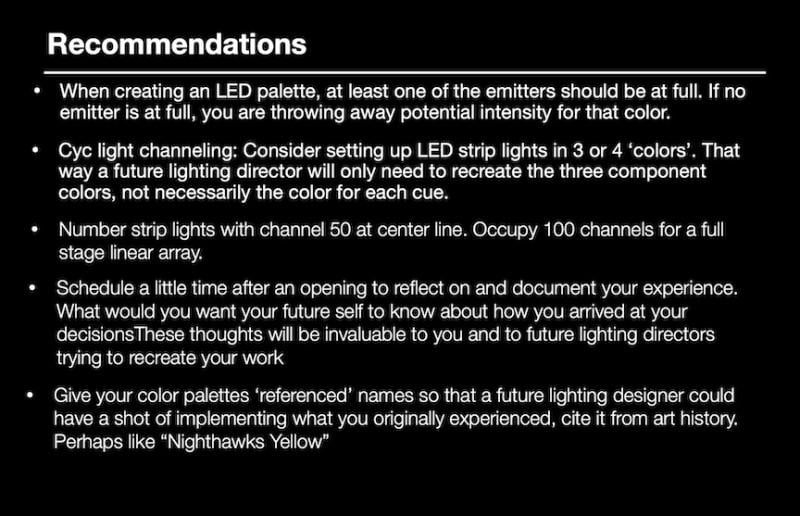One of the new highlights at Showlight 2025 was a series of workshops, running from 30 minutes to two hours in length, and featuring deeper dives into selected topics, as compared to Showlight’s de rigueur 20-minute presentations. The first of these was “Color and Light in The Age of LED Luminaires,” presented by American lighting designer Clifton Taylor.
Growing up in the golden age of tungsten lighting and author of the book, “Color & Light: Navigating Color Mixing in the Midst of an LED Revolution, a Handbook for Lighting Designers,” Taylor, who is also one of the founders of the Studio School of Design, has updated the color lecture he presented for many years with LD Beverly Emmons. Moving into the LED color palettes, he has found his approach to color morphing from previous perceptions, with a new vocabulary and new ways of looking at color and light.

“Are we in crisis,” asks Taylor, noting that we have completed the ‘revolution’ referred to in his book, but where does that leave us? “LEDs have completely changed our world, and taken over our business,” he says, asking for a raise of hands by any theatre consultants in the audience to confirm his theory that new buildings no longer specify any dimmers. “The ramp-up to LED is full-blown,” Taylor observes, noting that most designers enjoy the flexibility of LEDs, but not the limitations.
With a carefully orchestrated demonstration of color-mixing with LED sources, Tayor poses the basic question: “Why do we need color?” Emotions. Atmosphere. Collaboration with set and costume designers. Depth. Variation. Different sources. The responses from the audience vary greatly but point out the importance of color in most situations. For me it was a flashback to the Taylor-Emmons color lecture at the Broadway Lighting Master Classes, where the color scrollers were an integral aspect of doing such a demonstration with gel, rather than LEDs.

Taylor pointed out the evolution of LEDs, noting that the first blue one was available in Japan in 1992, allowing for a white color and revolutionizing LED sources for stage lighting, from the early RGB fixtures to LED video screens. “Adding a lime LED produces a better white, with more brightness,” Taylor insists, proving his point by adding lime to his demonstration. When looking at LED light engines, Taylor prefers the lime to amber or white, noting you always need red and lime, as well as blue, but which blue? Which red?
“Don’t be afraid of LEDs,” he admonishes. “They are defining our culture. Don’t obsess about what we had, and don’t stress about old gel colors. Make new ones,” he advises, saying it has been years since he used such colors as Bastard Amber. In fact, scientists are discovering new colors, such as ‘Olo,” a blue-green that emerged recently by stimulating specific cells in the retina.
Does Taylor miss tungsten? I’d say yes for certain uses in specific situations, especially for lighting skin tones. But as he admits, “Saturated LED colors are brighter than their tungsten counterparts, while tungsten is better for non-saturated colors. It’s all in the relationship of color and brightness." Just as Technicolor in 1939 (The Wizard of Oz) and Eastman Color in 1971 (Clockwork Orange) opened our eyes to new ways of looking at color, the LED revolution continues to take us into new territory and lighting designers have endless new palettes to use in conquering color.
Check out Live Design's coverage of Showlight 2025.